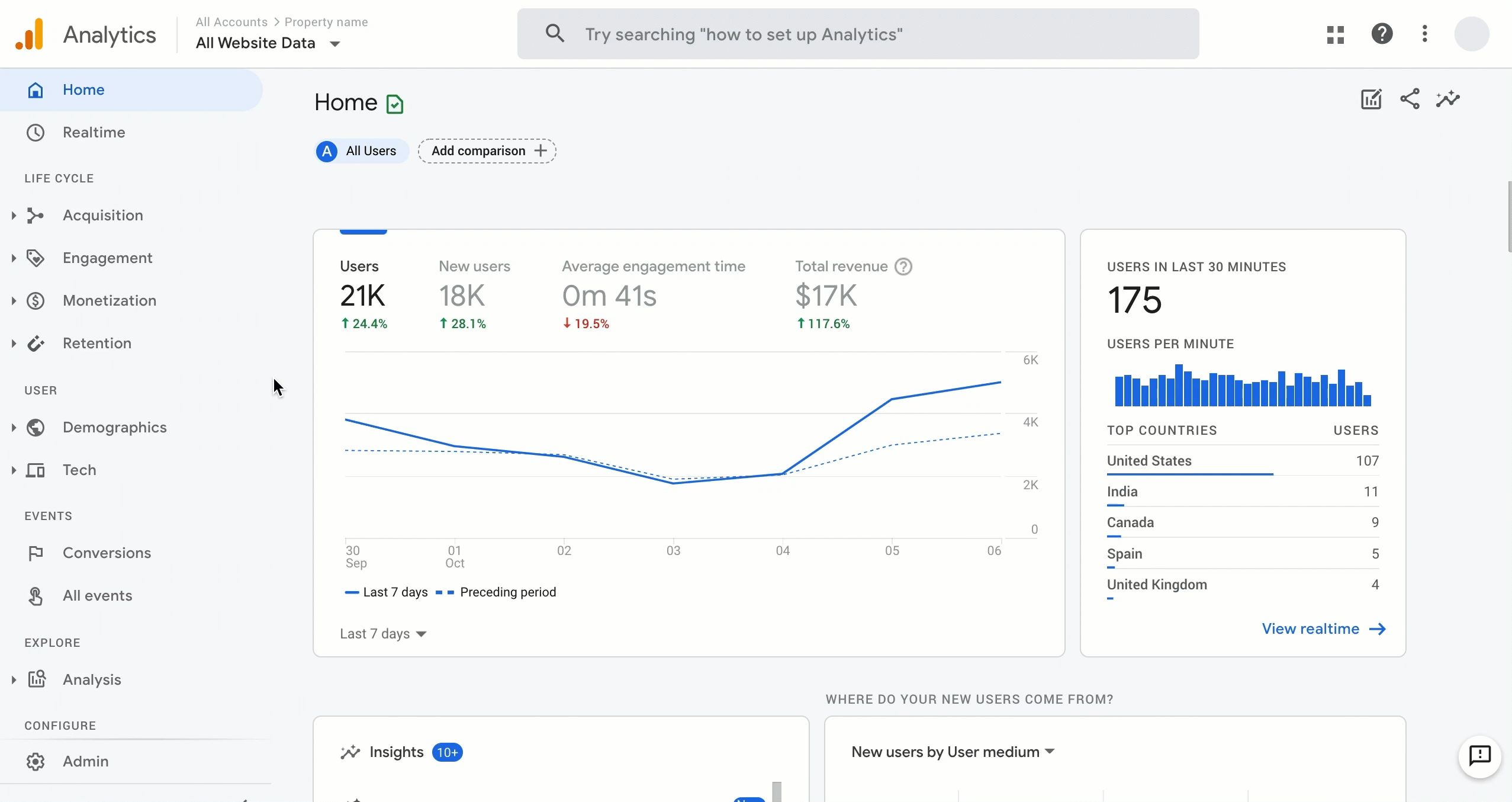Google Analytics has been a game-changer for many organizations, including churches because it provides incredibly valuable insights about the activities taking place across your website.
For many people, Google Analytics (and the upcoming transition to Google Analytics 4) can feel quite overwhelming or complicated but it doesn’t have to be that way.
What is Google Analytics?

First, let’s start with the basics… What is Google Analytics?
Google Analytics is a web analytics service that provides statistics and basic analytical tools for search engine optimization (SEO) and marketing purposes. This is a free service available to anyone with a Google account.
Once you create your account with Google, (learn more about how to set up your Google Analytics account here), Google will provide you with a unique code that you can add to your website to begin tracking data across your church/ministry website.
How Does Google Analytics Help My Church?
Google Analytics is used to track website performance and collect visitor insights and categorize that information in easy-to-view and easy-to-obtain charts and reports. Your church or ministry can then use that data to identify things like visitor demographics to better understand who is visiting your site (age, gender, and geographic region) as well as how much website traffic you’re garnering (things like page visits, time spent on your website, etc.).
Additionally, Google Analytics can also help your church…
- determine the top sources of user traffic (i.e. Did this visitor come from social media or a web search?).
- gauge the success of their marketing activities and campaigns (i.e. How many people visited your website thanks to the mailers you sent out?).
- track goal completions (such as watching a sermon or planning their visit).
- discover patterns and trends in user engagement (for instance, which pages are visited most often).
As you can see, Google Analytics has a lot to offer your ministry! These examples are just a handful of ways your church or ministry can take advantage of Google Analytics and increase your effectiveness in reaching and serving more people online.
The latest update, Google Analytics 4 (GA4), is set to replace the current version (Universal Analytics or UA) on July 1st, 2023. We’ll guide you through some of the key features about Google Analytics 4 and how to upgrade your website from The Church Co to GA4.
Key Features of GA4

Events Tracking
One of the most significant changes in GA4 is the shift from pageviews to an events-based tracking model. This feature lets you track specific visitor interactions with your website’s content, such as streaming audio sermons, blog articles, sign-up forms, and live-streamed worship services. By understanding how visitors engage with your website, you can make intentional decisions to optimize their overall experience and enhance your ministry’s online evangelization efforts.
Cross-Device Tracking
GA4 also introduces the ability to track user behavior across multiple devices. This is particularly important for churches as many visitors may access their website from a desktop, tablet, or mobile device. With cross-device tracking, you can map an individual user’s journey on any device from when they land on your website to when they take any desired action. This feature does requires some advanced programming skills, so you may need to consult a an expert on best practices and how to implement this feature correctly.
Engagement Rate
Unlike the bounce rate in Universal Analytics (the version prior to GA4), which only tells you how many people left your website after viewing a single page, the engagement rate in GA4 provides an overview of just how engaged visitors are with your website. It measures how long they stay on your website and how many pages they view. By tracking your engagement rate, you can create the type of content visitors seek and adjust your website’s design to enhance your visibility and influence online.
How to Upgrade to GA4 on The Church Co Website Builder Platform

To upgrade to GA4 on your church website, the first step is to create a Google Analytics account and set up a GA4 property for your church website. Once the property is set up, the next step is to plug in your GA4 tracking code into The Church Co. This can quickly be done on your website dashboard with just a few clicks!
First, you’ll want to copy your code from your Google Analytics account. Then all you have to do is sign in to your account, head to “Add Ons and Integrations,” click Google Analytics, and paste your tracking code into the field provided.
By regularly monitoring and analyzing these metrics in GA4, you can make informed decisions about your church website design and how to serve your members better. Don’t be afraid to take advantage of the power of GA4 – you never know how many lives could be impacted and many potential souls could be reached by your ministry as a result!
We’d love to hear your feedback! Does your church currently use Google Analytics? In what ways has Google Analytics helped you better serve your parish or church organization?

